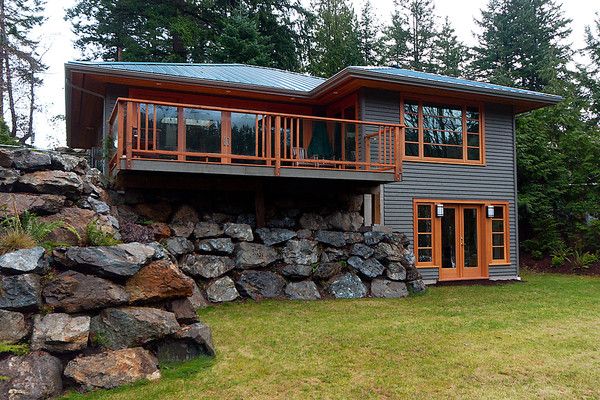#15823. Modern Two-Story Facade with Wooden Accents on Rocky Foundation

This modern country house is an excellent example of architecture integrated into the natural landscape. The two-story structure with a flat roof is organically positioned on a rocky slope, utilizing the elevation changes as part of the design solution.
The facade features a restrained color palette – gray siding serves as a neutral background that beautifully contrasts with warm wooden elements. Particularly expressive are the window frames and doors made of natural wood, adding warmth and hospitality to the facade. The large panoramic windows on the upper floor not only serve as a source of natural light but also create a visual connection with the surrounding forest landscape.
The spacious deck with wooden railings that wraps around the upper floor functions as both an extension of the living space and a viewing platform. The architect skillfully used the terrain's relief – the retaining wall made of natural stone serves as both a structural element and an aesthetic accent, emphasizing the house's connection with its environment.
When designing your own facade, it's worth paying attention to techniques such as contrasting textures (wood, stone, metal), using natural materials to create harmony with the surroundings, and functional zoning of the facade to expand living space. A particularly successful approach is the use of large glazed surfaces to maximize the interaction between interior spaces and the surrounding nature.